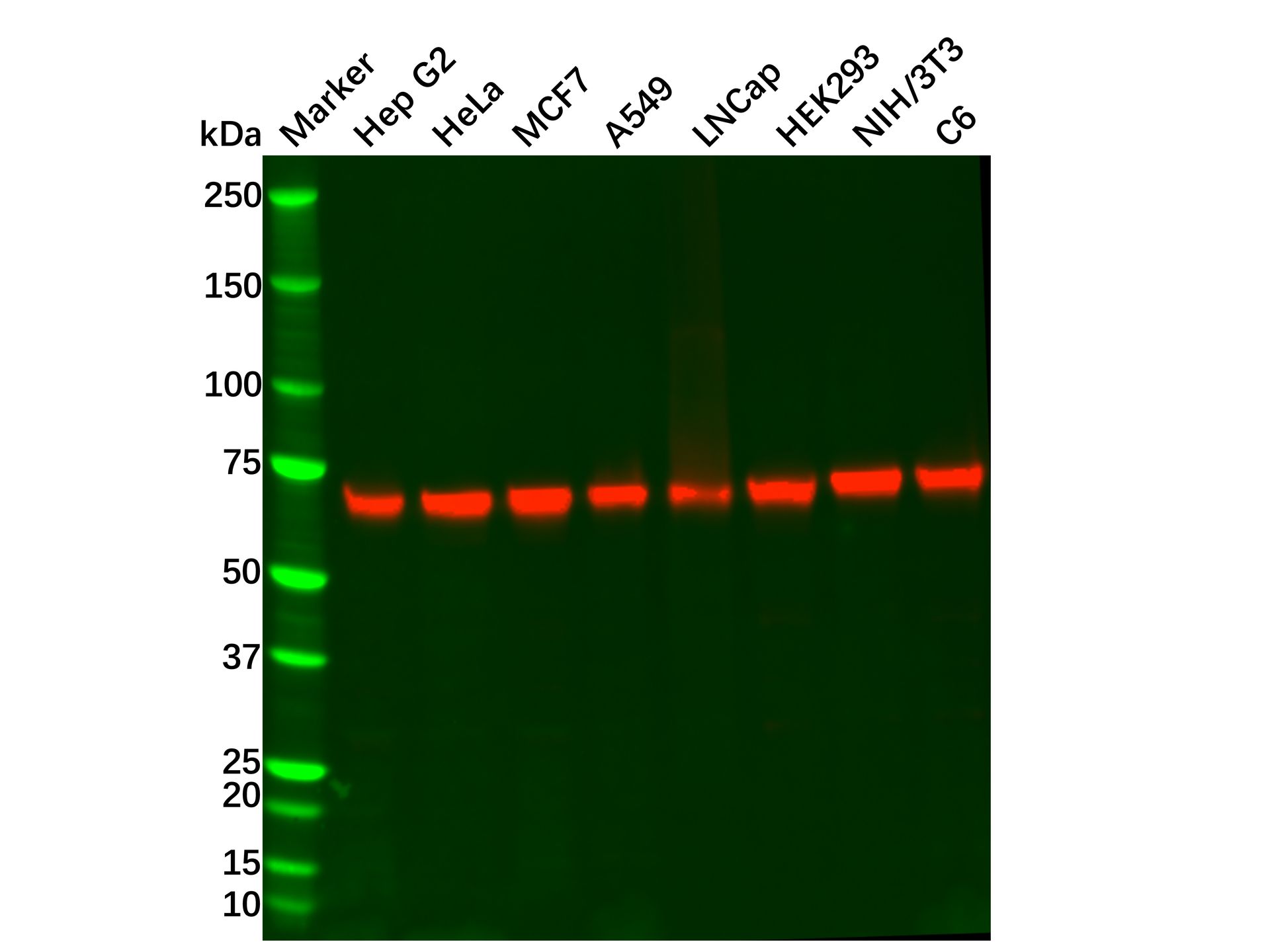| 1. Choudhary C, Kumar C, Gnad F, Nielsen ML, Rehman M, Walther TC, Olsen JV, Mann M. (2009) Lysine acetylation targets protein complexes and co-regulates major cellular functions.. Science, 325 (5942): (834-40). [PMID:19608861] [10.1021/op500134e] |
| 2. G Herma Renkema,Saskia B Wortmann,Roel J Smeets,Hanka Venselaar,Marion Antoine,Gepke Visser,Tawfeg Ben-Omran,Lambert P van den Heuvel,Henri J L M Timmers,Jan A Smeitink,Richard J T Rodenburg. (2014-05-02) SDHA mutations causing a multisystem mitochondrial disease: novel mutations and genetic overlap with hereditary tumors.. European journal of human genetics : EJHG, 23 ((2)): (202-209). [PMID:24781757] |
| 3. Bourgeron, T T and 7 more authors.. (1995) Mutation of a nuclear succinate dehydrogenase gene results in mitochondrial respiratory chain deficiency.. Nature genetics, [PMID:7550341] |
| 4. Hirawake, H H, Wang, H H, Kuramochi, T T, Kojima, S S and Kita, K K.. (1994) Human complex II (succinate-ubiquinone oxidoreductase): cDNA cloning of the flavoprotein (Fp) subunit of liver mitochondria.. Journal of biochemistry, [PMID:7798181] |
| 5. Morris, A A AA, Farnsworth, L L, Ackrell, B A BA, Turnbull, D M DM and Birch-Machin, M A MA.. (1994) The cDNA sequence of the flavoprotein subunit of human heart succinate dehydrogenase.. Biochimica et biophysica acta, (29): [PMID:8142412] |
| 6. Parfait, B B and 5 more authors.. (2000) Compound heterozygous mutations in the flavoprotein gene of the respiratory chain complex II in a patient with Leigh syndrome.. Human genetics, [PMID:10746566] |
| 7. Birch-Machin, M A MA, Taylor, R W RW, Cochran, B B, Ackrell, B A BA and Turnbull, D M DM.. (2000) Late-onset optic atrophy, ataxia, and myopathy associated with a mutation of a complex II gene.. Annals of neurology, [PMID:10976639] |
| 8. Van Coster, Rudy R and 9 more authors.. (2003) Homozygous Gly555Glu mutation in the nuclear-encoded 70 kDa flavoprotein gene causes instability of the respiratory chain complex II.. American journal of medical genetics. Part A, (1): [PMID:12794685] |
| 9. Aboulaich, Nabila N, Vainonen, Julia P JP, Strålfors, Peter P and Vener, Alexander V AV.. (2004) Vectorial proteomics reveal targeting, phosphorylation and specific fragmentation of polymerase I and transcript release factor (PTRF) at the surface of caveolae in human adipocytes.. The Biochemical journal, (15): [PMID:15242332] |
| 10. Schmutz, Jeremy J and 75 more authors.. (2004) The DNA sequence and comparative analysis of human chromosome 5.. Nature, (16): [PMID:15372022] |
| 11. Hao, Huai-Xiang HX and 13 more authors.. (2009) SDH5, a gene required for flavination of succinate dehydrogenase, is mutated in paraganglioma.. Science (New York, N.Y.), (28): [PMID:19628817] |
| 12. Burnichon, Nelly N and 13 more authors.. (2010) SDHA is a tumor suppressor gene causing paraganglioma.. Human molecular genetics, (1): [PMID:20484225] |
| 13. Levitas, Aviva A and 8 more authors.. (2010) Familial neonatal isolated cardiomyopathy caused by a mutation in the flavoprotein subunit of succinate dehydrogenase.. European journal of human genetics : EJHG, [PMID:20551992] |
| 14. Ogura, Masato; Yamaki, Junko; Homma, Miwako K and Homma, Yoshimi.. (2012) Mitochondrial c-Src regulates cell survival through phosphorylation of respiratory chain components.. The Biochemical journal, (15): [PMID:22823520] |
| 15. Alston, Charlotte L CL and 12 more authors.. (2012) Recessive germline SDHA and SDHB mutations causing leukodystrophy and isolated mitochondrial complex II deficiency.. Journal of medical genetics, [PMID:22972948] |
| 16. Sciacovelli, Marco M and 12 more authors.. (2013) The mitochondrial chaperone TRAP1 promotes neoplastic growth by inhibiting succinate dehydrogenase.. Cell metabolism, (4): [PMID:23747254] |
| 17. Helman, Guy G and 13 more authors.. (2016) Magnetic resonance imaging spectrum of succinate dehydrogenase-related infantile leukoencephalopathy.. Annals of neurology, [PMID:26642834] |
| 18. Courage, Carolina C and 6 more authors.. (2017) SDHA mutation with dominant transmission results in complex II deficiency with ocular, cardiac, and neurologic involvement.. American journal of medical genetics. Part A, [PMID:27683074] |
| 19. Lahiri, Amit A, Hedl, Matija M, Yan, Jie J and Abraham, Clara C.. (2017) Human LACC1 increases innate receptor-induced responses and a LACC1 disease-risk variant modulates these outcomes.. Nature communications, (8): [PMID:28593945] |



